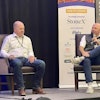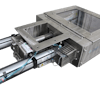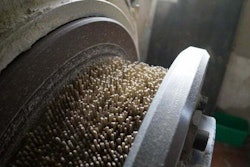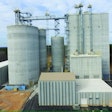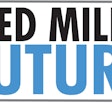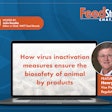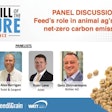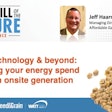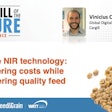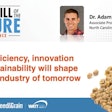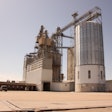Formulation software is a tool feed producers can use to deal with ingredient availability issues and environmental footprint reductions
Feed Strategy’s 2023 Feed Industry Outlook report表明全球动物饲料行业将面临another year of challenges and uncertainty. Whether producers are navigating high raw material costs, market volatility, ingredient quality parameters and, increasingly, environmental impact concerns, a company’s feed formulation software is critical to helping provide a rapid response to address these issues while protecting margins.
Karel Vervaet, a senior product specialist for nutrition atBESTMIX, joined the Chat to discuss how feed formulation software may increasingly play a role in maintaining quality and profitability.
Feed software’s rapid response to changing needsfromWATT Global MediaonVimeo.
Transcription of Feed Strategy Chat with Karel Vervaet, senior product specialist – nutrition, BESTMIX
Jackie Roembke, editor in chief, WATT Feed brands/Feed Strategy:Hello everyone and welcome to Feed Strategy Chat. I am your host, Jackie Roembke, editor in chief of WATT Feed brands and Feed Strategy magazine.
This edition of Feed Strategy Chat is brought to you by WATT Global Media and FeedStrategy.com. FeedStrategy.com is your source for the latest news and leading-edge analysis of the global animal feed industry.
Today we are joined on Zoom by Karel Vervaet, a senior product specialist for nutrition at BESTMIX. He is here to talk about how feed formulation software provides a rapid response to address some of the industry’s most pressing issues.
Hi, Karel, how are you today?
高级产品专家,卡雷尔Veraet BESTMIX:Hi, Jackie, I’m doing well. Thank you.
Roembke:Excellent. Well, let’s get right into it.As we begin a new year, what do you think will be the biggest issue facing animal feed producers?
Veraet:嗯,这是一种很难预测未来will bring, but I do believe that with everything that’s going on on a global scale today, and the availability that we see in the market, raw material availability is becoming more and more of an issue for a lot of feed companies around the globe.
So, I think that being able to address this issue — having all the raw materials available at the right spot, at the right time and, if possible, also at an interesting price — that will be a very big challenge.
I think sourcing of materials in general will be the topic of 2023.
Roembke:Great, thanks for that insight.And can you please provide an example of how feed formulation can be used to address this issue?
Veraet:Well, I don’t think it’s a solution that feed formulation software alone can tackle. I think when you look at sourcing of materials, this is always a joint effort. You have the purchasing department on one hand. You have quality control that needs to to look for the correct materials and the correct environment because if raw materials begin getting more and more scarce around the globe, you need to look for alternatives. And looking for alternatives will require also the quality department to be involved.
Now, once you got all the information in place then, of course, formulation software can help you and predict what you need, when you will need it, and what is the correct price to buy raw materials.
Although feed formulation will be at the heart of this operation to be able to predict what you need and when you need it, doing it without information from the ERP system where you look at contract positions of your raw materials — how your stock position is going to evolve — together with what quality department can do for you, I don’t think they will be able to do it themselves.
Having an integrated solution, where the different departments can talk to each other and can handle these requests in a matter of minutes, will be key for being able to deal with the problem that is at hand.
Join us on January 24 at the Feed Mill of the Future Conference for Karel Veraet’s presentation,“How feed formulation impacts downstream sustainability goals.”
Roembke:Taking it a step further, what role can formulation software play in allowing the producers to help their downstream customers achieve their sustainability goals?
Veraet:Again, feed formulation will not be the only system that can handle this. We do see that from studies, we know that especially in the animal feed industry, that sustainability is being delivered on the consumer side. We see a lot that today sustainability is very much driven by consumers. Consumers are more aware about sustainability, and they want to look at how our planet should look like in 2030, 2040 and so on.
Sustainability is a very consumer-driven topic — that’s how we perceive it today. The government and legislation is not incentivizing the feed formulations in the feed industry to become more sustainable. It’s something that the industry needs to take care of themselves, and it’s a very complex matter.
Now, what we saw in calculating sustainability for meat, milk, eggs, etc., feed is a very important component. It contributes to more than 80% of the total sustainability of the product that is consumed by the consumer community. So, therefore, feed formulation can contribute a lot in bringing down the environmental impact of the products that we supply to the supply chain.
Of course, feed formulation software alone, again, is not capable of calculating the sustainability. Therefore, it’s important that you look for partners that do have the knowledge, that do have the experience, and also have the objectivity of being able to calculate how sustainable in the end your feed or the end product that goes into the supply chain is.
So again, feed formulation software and feed formulation will have a major impact on the total sustainability figure, but without doing this together and with partners in the industry that have all the knowledge about lifecycle assessment and the environmental impact of the raw materials being used in the field, I don’t think that feed formulation alone will be able to do this.
Roembke: In the future, how might the role of feed formulation software evolve?
Veraet:I think feed formulation software is already at the heart of the feed companies. It is where the intellectual property of our customers is stored and is protected.
I don’t believe that there will be a major revolution in feed formulation software, but I do believe that as organizations grow and operate on a global scale, the importance of having the information, of having the feed formulation tool available 24/7 from anywhere and at any time, will become more and more important. It will also allow feed formulation managers to get insight in how their operation is being handled.
Looking at feed formulation software, I think you need to have a supplier that looks at the feed formulation business from a holistic point of view, does not look at feed formulation software as an island within a feed company, but that looks at feed formulation software, as let’s say the heart of an organization that should gather information from different departments and should bring all that information together within the system to be able to give the best advice to its customer base.
I think that if you look at how feed formulation software will evolve, yeah, I think that the trend will be globalization, IP protection, innovative in technology, and using the vast information that lies within that feed formulation database to apply new technology, like machine learning of intensified data analysis on that database, that will become more and more important in the future.
Roembke:Hey, thank you so much. For a deep dive on some of the things we talked about today — and if you’ll beat IPPE 2023 in Atlanta— consider joining us at the Feed Mill of the Future Conference on Jan. 24. Here,Karel will present“How feed formulation impacts downstream sustainability goals.” For more information, visit www.feedmillofthefuture.com.
Thank you so much, Karel, and thanks to you for tuning in.
Veraet:You’re welcome.
= Event At-A-Glance =
2023 Feed Mill of the Future Conference
How efficiency, innovation and sustainability
will shape the feed industry of tomorrow
Co-located with IPPE 2023 | Atlanta, Ga., USA
January 24, 2023 | 8 a.m. – 12:00 p.m. | Room B203
Fee:$95 early bird | $125 after January 6, 2023
View the full agenda here:www.feedmillofthefuture.com
How to register:To attend the Feed Mill of the Future Conference, attendees must first register
to attend IPPE.Register today for the lowest ticket price, go towww.ippexpo.org, and visit the “Education Programs” for details.

